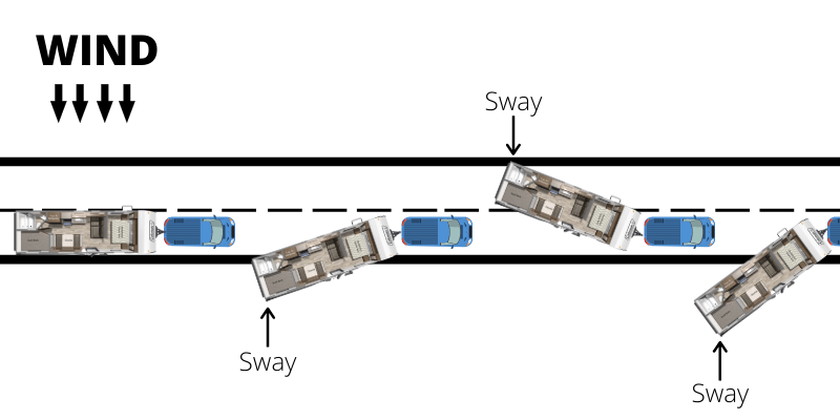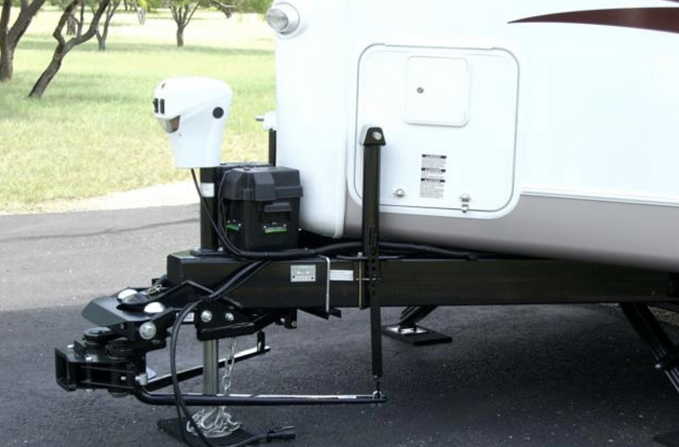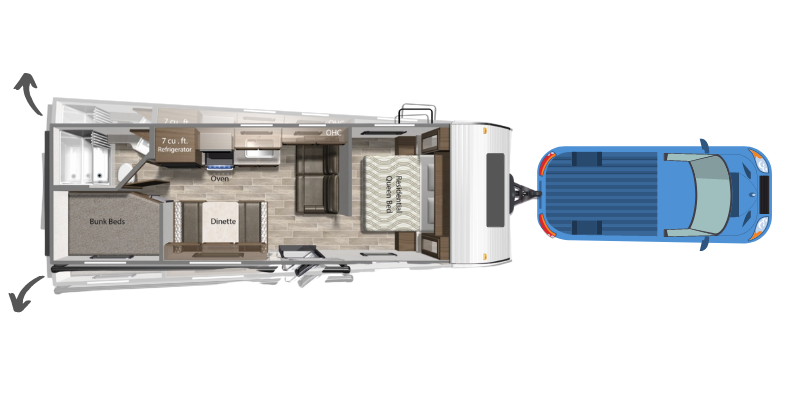Understanding Trailer Sway: Tips to Keep You Safe on the Road
Posted by ProPride Hitch on 3rd Dec 2020
When you're towing a trailer, one of the most crucial things to keep an eye on is the sway of your trailer behind your vehicle. You're probably wondering, how much sway is normal, and when should you be concerned about it? In this article, we're going to provide you with tips on how to better understand your trailer and its sway patterns, so you can avoid dangerous sway while on the road.
As the driver, you need to have a good understanding of your tow vehicle and the way it handles, to ensure the safety of yourself and those around you. According to the U.S. Department of Agriculture, sway increases as the speed of your vehicle increases. That's why it's essential to follow the posted speeds for trucks when you're hauling a trailer. The recommended speed is typically not more than 55 miles per hour. If you notice excessive sway, it's a good idea to check your speed. Often, whipping or sway is caused when a vehicle is going faster than the recommended speed. So, if you want to make sure your next road trip is a smooth and safe one, make sure you pay attention to your trailer's sway, and keep your speed in check.
Many people believe that increasing a vehicle's speed can help straighten it out, but in reality, it makes the vehicle even more unstable. This is especially true when you're hauling a trailer. As you increase your speed, the chances of getting into a dangerous trailer sway accident goes up. These accidents can result in significant damage to your vehicle and even cause fatalities. If you notice that you're having trouble with sway, the best thing you can do is to reduce your speed by at least 10 miles per hour.
Whether you're hauling a camping trailer or driving an RV, it's crucial to understand how sway can impact your driving experience. One important thing to examine is whether your tow vehicle is matched to the right size trailer. It's essential to check your vehicle's owner manual to ensure your vehicle is configured to handle the trailer you want to attach. By making sure you have the right vehicle and speed, you'll be able to prevent accidents, and enjoy a safer, smoother and more pleasant journey.
Do you know how to use a towing guide? Mark Polk of RV 101 says it's essential to know how to use one when hauling a trailer. Even if two vehicles look identical, they may have different rear axle ratios that can make a big difference in the tow ratings. This can ultimately impact the sway of a trailer when attached. That's why it's crucial to make sure your vehicle is matched to the right size hitch and trailer.
It's not just about getting the right equipment, it's also important to pay attention to the gear your vehicle is in while you're driving. Imagine that you're cruising down the road with your trailer behind you, but your gear is not the one recommended by the manufacturer for towing. It can cause more stress on your vehicle and lead to more sway. To avoid this, make sure to check your vehicle's manual to see what gear is recommended for towing by the manufacturer. By following these simple tips, you'll be able to keep your vehicle, yourself and your passengers safe while enjoying your trip.
When you're hitting the road with an RV or camper trailer, it's essential to keep in mind the weight of everything inside the trailer. Overloading your tow vehicle can lead to dangerous sway while on the road. To avoid this, it's crucial to understand the total weight of your trailer and all the items placed inside when hitching it to your vehicle. Too often, drivers forget about the added weight from items in their vehicle and in the trailer.
That's why the National Highway Traffic Safety Administration (NHTSA) emphasizes the importance of balancing the weight of items in your trailer evenly throughout its length and from side to side. By securing these items, you'll avoid them moving around while on the road, which will help keep your weight evenly distributed throughout your trip. By being mindful of weight distribution, you'll not only be able to enjoy a safer journey, but also make your trip more comfortable for you and your passengers.
When you're on the road, the wind can be your best friend, but it can also be your worst enemy. When you're towing a trailer, you have to be mindful of how the wind can impact your driving experience. A study by the Knott Laboratory in 2009 found that wind gusts caused by changes in the road's surface, such as going up mountains or driving through areas with a lot of trees, can cause fluctuations in wind speed that can affect your vehicle.
Crosswinds can also be created when other vehicles pass you. When you start to feel your trailer swaying from the wind, it's important that you don't panic and slam on the brakes. Instead, slowly decrease your speed, and try to steady the wheel as much as possible. You don't want to turn sharply into the sway. With this in mind, it's important to note that some level of trailer sway is normal and to be expected, but when you're aware of the wind and its impact, you'll be able to minimize its effect on your journey.

Wind is a powerful force that can have a big impact on your trailer's stability while on the road. It can cause your trailer to sway side to side, making for an unnerving and potentially dangerous driving experience. To minimize the impact of wind on your trailer's sway, it's crucial to have a hitch that can provide some level of control.
The National Highway Traffic Safety Administration NHTSA provides several tips to help avoid excessive trailer sway. These include regularly checking the brakes on both your trailer and your vehicle, inspecting your trailer to ensure that all fasteners are secure, and having your tires on the tow vehicle and your trailer checked regularly. Additionally, it's important to always have a spare tire in case of a flat. One important tip to keep in mind is that underinflated tires can cause excessive sway. This is because an underinflated tire can affect your vehicle's weight capacity, leading to major sway control problems. By following these tips and being mindful of wind conditions while on the road, you'll be able to enjoy a safer and more comfortable driving experience.
Trailer sway can happen not only on the open road, but also when making turns or slowing down to stop. To help reduce any potential sway in your trailer, it's important to make wider turns than normal and increase the distance you use for stopping.
As a responsible driver, it's important to be aware of what is normal when it comes to trailer sway. By following the safety tips outlined in this article, you can avoid driver error, which is a major cause of excessive sway on the road. Always err on the side of caution and be prepared to adjust your driving as needed.
If you're looking for an advanced solution to limit the amount of sway you experience while on the road, ProPride's 3P® hitch is the perfect choice. It's the most advanced trailer sway control hitch on the market, and is designed to provide you and your loved ones with the safest possible towing experience. Learn more about What is Trailer Sway in this article by reading this article and take the first step in enhancing your towing experience.



